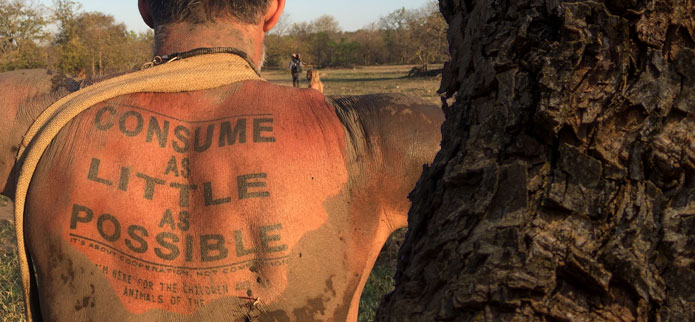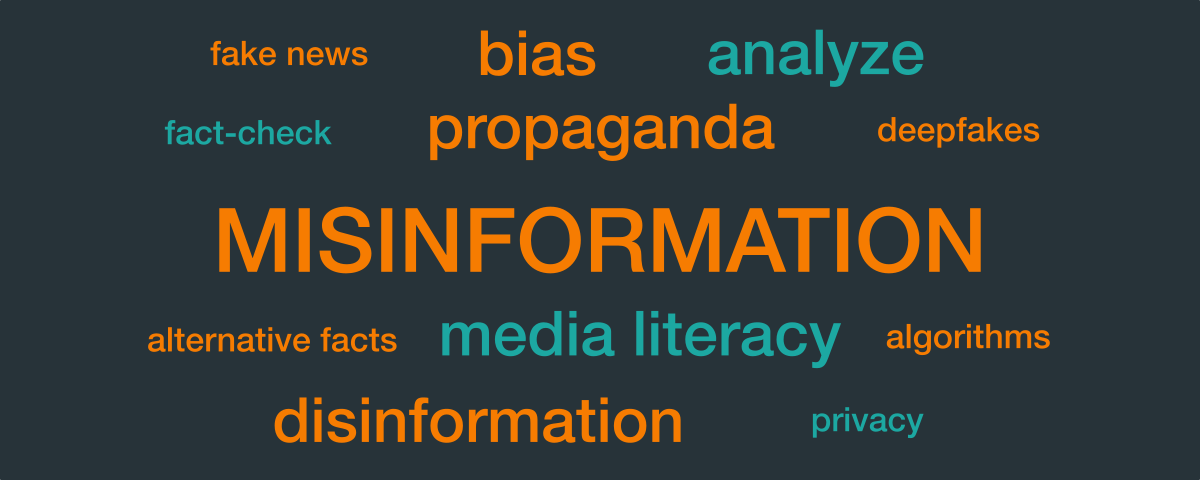
Examining Causality of the “Infodemic”
May 1, 2020 in Views
Scientists around the world are cringing, calling the unprecedented tidal wave of misinformation surrounding the COVID 19 virus an “infodemic.” Let’s face it. Humans are bad at spotting fake information and spread it willingly without identifying and vetting sources for accuracy.
Misinformation affects everyone and can be dangerous. Today, COVID 19 inspires a cacophony of false information flooding social media. And people believe. They hit “share.” It begs the question, why do people so readily believe things that aren’t true? Otherwise smart, educated people are equally as guilty of neglecting to deep-source-check information. It’s a human trait. To understand the phenomena, we need to look at the foundation of “belief.” We humans tend to believe things based on at least one of what can be termed, “The Seven Causes of Belief.” Philosopher Walter Kauffman identified seven causes affecting what humans choose to believe. The belief can be any kind, whether religious, political, or any number of ideas. The causes are, in no particular order:
1) Belief by attrition— forced to believe it.
2) Belief by osmosis—brought up believing it and never questioned it.
3) Belief by appeal to authority— or argumentum ad verecundiam, which is a form of defeasible argument in which the opinion of an authority on a topic is used as evidence to support an argument.
4) Belief by following the crowd— believing what the crowd believes.
5) Belief by “it sounds good.”
6) Belief by “it feels good.”
7) Belief based on provable fact.
As we see, six of the impetuses of belief are not based in fact. Facts are often hard to establish. It’s a human trait to take the easy route when it comes to belief in anything. We tend to believe what sounds good, what feels good. Or we listen to an authority figure without determining upon what facts the argument is based. When misinformation, and subsequent belief in falsehood costs lives, as with the COVID 19 conspiracy theories, it becomes clear that we humans need to step it up a notch when it comes to what we believe. We need to take responsibility to deep-source-check the facts, from the originating source. If a link to a report is published in an article, click the link; if the link takes you to a link to a study, read the study. If you don’t understand the science of something, read up on the actual science from a leading university, for instance. Go to the originating source and fact check. Avoid biased sources. You can do it. We can beat the infodemic with a little elbow grease and time. It’s worth it. And in the case of COVID 19, lives may depend on it.
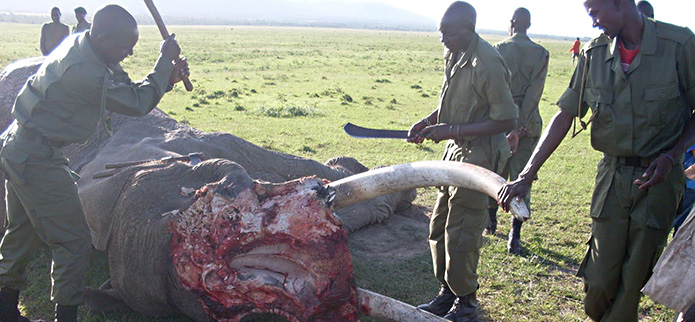
Hong Kong Bans Ivory
February 7, 2018 in Pantheism News
The Hong Kong Legislative Council this week approved a ban on the domestic ivory trade, according to the World Wildlife Foundation. The ban includes no compensation by 2021 and an increase in the maximum penalty for wildlife crime offenses to 10 years.
WWF officials said they welcome the new legislation.
“A ban on ivory sales with heavier penalties in Hong Kong shows a clear commitment towards the future of African elephants. This will help reverse the trend of elephant poaching and illegal ivory trafficking.” said Cheryl Lo, Manager, Wildlife Crime. Hong Kong is the largest ivory city market in the world and a major transit hub for illegal wildlife trade due to low fines and sentences for traffickers and zero prosecutions of the criminal kingpins.
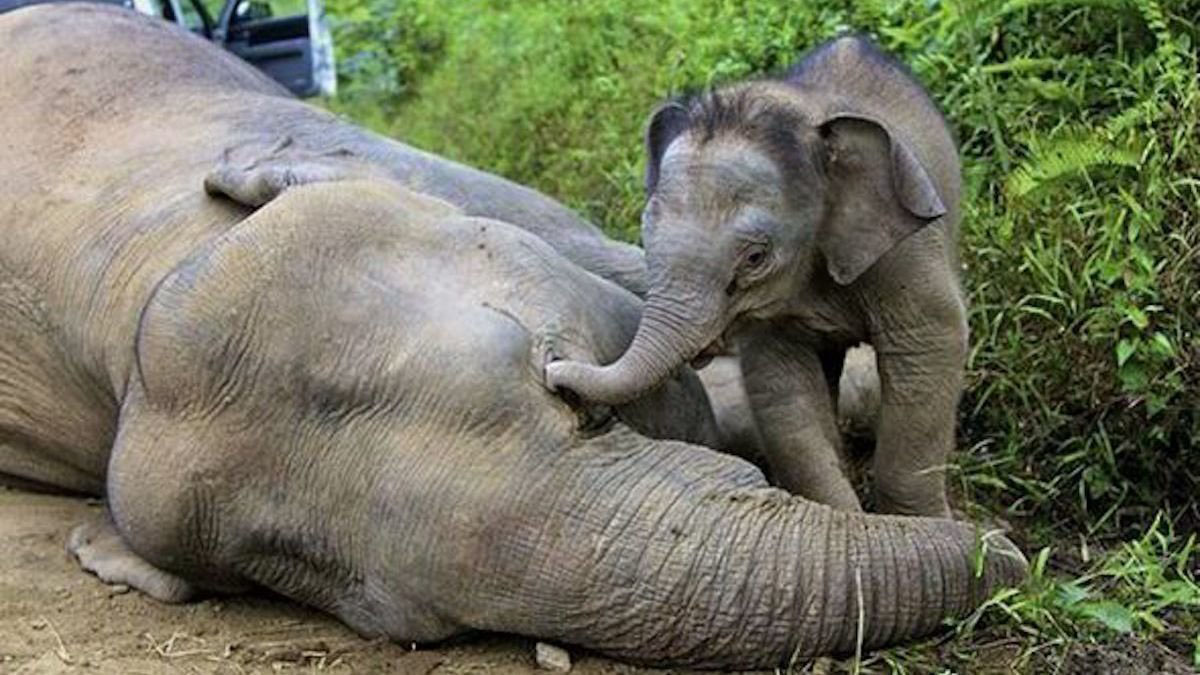 China closed its legal ivory market at the end of 2017. Ivory trade in the country is now illegal, which may increase Hong Kong’s position as a preferred market for illegal ivory under the cover of remaining legal traders. The Hong Kong ban will help curb this trend. There is also evidence that domestic ivory markets in Vietnam, Cambodia, Lao PDR, Japan, and Myanmar are increasingly catering to visitors from China. Gavin Edwards, Conservation Director said, “This is the time to increase rather than to relax our efforts. With stronger sentences in Hong Kong, law enforcement should take a greater role in joint efforts to investigate and prosecute criminal wildlife syndicates. WWF calls on governments across Asia to follow China and Hong Kong’s lead and close their ivory markets.”
China closed its legal ivory market at the end of 2017. Ivory trade in the country is now illegal, which may increase Hong Kong’s position as a preferred market for illegal ivory under the cover of remaining legal traders. The Hong Kong ban will help curb this trend. There is also evidence that domestic ivory markets in Vietnam, Cambodia, Lao PDR, Japan, and Myanmar are increasingly catering to visitors from China. Gavin Edwards, Conservation Director said, “This is the time to increase rather than to relax our efforts. With stronger sentences in Hong Kong, law enforcement should take a greater role in joint efforts to investigate and prosecute criminal wildlife syndicates. WWF calls on governments across Asia to follow China and Hong Kong’s lead and close their ivory markets.”

Since 2015, WWF-Hong Kong has campaigned for a ban on the ivory trade to ensure wildlife crime is considered a serious crime. WWF’s report, “The Hard Truth,” revealed several legal loopholes in Hong Kong’s ivory regulations and published a feasibility study on the ban of Hong Kong’s ivory trade in 2016. Through these in-depth studies in Hong Kong and various community engagement campaigns, the WWF received enormous public support with 91,643 Hong Kong residents signing a petition in support of a ban. In response to calls from WWF and other NGOs, the government moved forward with the proposed five-year timetable to end the domestic ivory trade.

Doomsday Slated for June 24, 2018
February 7, 2018 in Pantheism News
Mark your calendar. The world is slated to end (yet again) on June 24, 2018. So says conspiracy theorist and self proclaimed “prophet” Mathieu Jean-Marc Joseph Rodrigue.
He believes the Bible supports his doomsday theory, citing the passage in Revelation 13:5, which he claims points to the end of days. It reads, “…he was given authority to act for 42 months.”
He said he can support this cryptic passage with math and visions. In an interview with the Daily Star, Rodrigue said: “I heard a voice in the middle of the four living beings. This is wisdom. He who has intelligence can interpret the figure of the beast. It represents the name of a man. His figure is 666.” He claims by adding the number of crop harvests with the price hike, it should produce the doomsday date.
Many have foretold the impending annihilation of Earth repeatedly throughout history, but for some strange reason it never happens as predicted. Just last year, David Meade falsely predicted a planet named Nibiru would slam into Earth and explode. Happily, we’re still here. In antiquity, Pope Sylvester proclaimed Jesus would return in the year 1000. It didn’t happen. Emanuel Swedenborg preached it would happen in 1757; then William Miller said it would end in 1843 and 1844, for good measure; Charles Taze Russell said all would be lost in 1874; Mormon founder Joseph Smith predicted it would end in 1891; The Watchtower Society (of the Jehovah’s Witnesses) said time’s up in 1914; Herbert Armstrong confusingly predicted four separate dates, including 1935, 1943, 1972 and 1975; Harold Camping said 1994 and 2011 would see the end of days. Edgar Cayce guessed the year 2000; Jack Van Impe said 2012; and Mark Blitz proclaimed 2015. Thankfully, mankind has survived and the Earth is still here. For now.
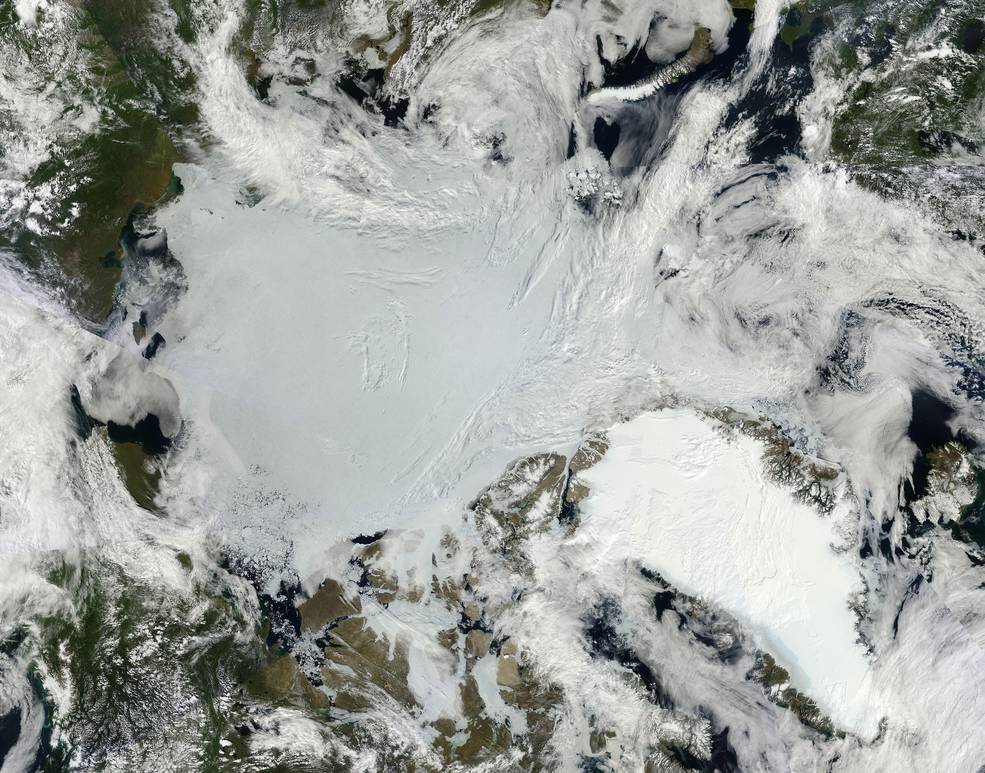
NASA Tackles Big Science Questions
February 6, 2018 in Pantheism News
The Polar Radiant Energy in the Far Infrared Experiment (PREFIRE) will fly a pair of small CubeSat satellites to probe a little-studied portion of the radiant energy emitted by Earth for clues about Arctic warming, sea ice loss, and ice-sheet melting. Tristan L’Ecuyuer of the University of Wisconsin, Madison, is the principal investigator.
The Earth Surface Mineral Dust Source Investigation (EMIT) will use a sensor mounted to the exterior of the International Space Station to determine the mineral composition of natural sources that produce dust aerosols around the world. By measuring in detail which minerals make up the dust, EMIT will help to answer the essential question of whether this type of aerosol warms or cools the atmosphere. Robert Green of NASA’s Jet Propulsion Laboratory (JPL) in Pasadena, California, is the principal investigator.
These two instruments were competitively selected from 14 proposals considered under NASA’s fourth Earth Venture Instrument opportunity. Earth Venture investigations are small, targeted science investigations that complement NASA’s larger missions. The National Research Council recommended in 2007 that NASA undertake this type of regularly solicited, science-based, quick-turnaround project. The council’s recently released decadal survey recommended the continuance of the program.
“PREFIRE and EMIT make innovative use of technologies first developed by NASA for planetary missions to address important, longstanding questions about Earth,” said Michael Freilich, director of the Earth Science Division at NASA Headquarters in Washington.
The Arctic helps to regulate Earth’s overall temperature by radiating back into space much of the excess energy from the Sun that is absorbed at lower latitudes. Current satellite instruments do not detect all of the wavelengths of this energy radiating from our planet. PREFIRE will fill in the current data gap at far-infrared wavelengths, collecting information that will help scientists diagnose the impact of this outgoing radiation on the Arctic region’s energy balance.
PREFIRE will fly miniaturized thermal infrared spectrometers on two CubeSat satellites, each about the size of a loaf of bread. The sensors are based on technology previously flown on the Mars Climate Sounder, an instrument on NASA’s Mars Reconnaissance Orbiter. The CubeSats will orbit Earth’s poles to measure far-infrared emissions and how they change throughout the day and over seasons. The observations will allow scientists to assess how changes in thermal infrared emissions at the top of Earth’s atmosphere are related to changes in cloud cover and surface conditions below, such as the amount of sea ice and meltwater on the surface of the ice.
The PREFIRE team brings together expertise in remote sensing, Earth system modeling, and Arctic Ice. JPL and the Space Dynamics Laboratory of North Logan, Utah, are mission partners.
The composition of airborne dust particles is largely unknown, but it is a critical factor in determining whether mineral-based dust has a cooling or warming effect on the atmosphere. Scientists do not currently have a global inventory of the natural mineral sources of dust, and as a result the global impacts of dust on weather, atmospheric circulation, and other aspects of Earth’s environment are not well established.
EMIT’s hyperspectral instrument will measure the different wavelengths of light emitted by minerals on the surface of deserts and other dust sources to determine their composition. The EMIT sensor is based in part on NASA’s Moon Mineralogy Mapper instrument aboard the Indian Space Research Organization’s Chandrayaan-1 spacecraft.
The EMIT team brings together broad expertise that covers mineral measurements, soil science, remote-sensing of surface properties, and Earth system modeling. The project’s modeling component will use the data collected to advance our understanding of the role of atmospheric dust in Earth’s climate and better predict how it can be expected to change in the future.
Earth Venture missions provide an innovative approach to address Earth science research with regular windows of opportunity to accommodate new scientific priorities. The missions are managed by NASA’s Earth System Science Pathfinder program, located at NASA’s Langley Research Center in Hampton, Virginia, for the agency’s Science Mission Directorate.
The first Earth Venture Instruments headed to space are preparing for launch within the next year. The Global Ecosystem Dynamics Investigation (GEDI) and the ECOsystem Spaceborne Thermal Radiometer Experiment on Space Station (ECOSTRESS) will measure the distributions, canopy heights, and changes in global vegetation from the space station, providing insights into how forests and ecosystems are affected by changes in water availability and other environmental and human factors.
For more information about the Earth Venture program, visit:
Credit NASA press release
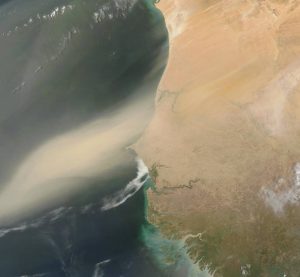
A sensor mounted to the exterior of the International Space Station will determine the mineral composition of natural sources that produce dust aerosols around the world to answer the question of whether this type of aerosol warms or cools the atmosphere. This 2003 satellite image shows a large dust plume blowing off the Sahara Desert and out over the Atlantic Ocean.
Credits: NASA

Sustainable Tips for Dining Out
February 4, 2018 in Views
You know the drill. You’re going out on the town tonight. Dinner and a movie with friends or loved ones. The waitress automatically gives you a plastic straw for your drink. There’s so much food, you can’t finish it all, so you ask for a takeout container. It’s either plastic or styrofoam. The straw goes straight into the trash after you leave. The next day, you throw the to-go package in the bin. It goes to the landfill. Congratulations. You’ve just created unnecessary garbage that will linger on Earth for centuries to come. You are not alone. Most people do the exact same thing. It’s what we do. We are trash creators. We are burying ourselves in refuse without giving it a second thought. But there may be a better way.
We humans have become lazy and complacent, without regard for the long term effects on the planet our decisions cause. Perhaps we are spoiled. Perhaps it is just a matter of our conditioning, how we were raised. We behave by osmosis. It doesn’t have to be this way. We have the capacity to learn and grow and make good choices that will lesson our negative footprint on the environment, and it isn’t really that hard at all.
As Pantheists, we understand our connection to all things; to each other, to the Earth, and to the universe. Most of us have a love for nature and protecting the wild. Living more sustainably is an integral part of this stewardship spirit. We may have the ability to do more to protect the environment, and reduce our footprint on the land.
You and I have it in our power to make a huge impact in decreasing garbage and cleaning up our cities and the environment. With a few small changes in restaurant habits, a person can make an enormous impact.
- Refuse the plastic straw. At the restaurant, first things first, refuse the plastic straw. There are millions of straws thrown into the garbage every single day. Think about that. Every. Single. Day. They end up in landfills and floating in our water ways, or littering our streets. It takes some 450 years for these one-use straws to degrade, and even then, they do not disappear completely, but become micro plastic, with the same harmful chemicals in them. Plastic straws contain BPAs and other toxic chemicals which are unhealthy to humans. My take on it is, if the container for your beverage isn’t already clean enough to drink from, a straw isn’t going to help the cleanliness of the liquid. Kids and grown-ups can learn to drink a beverage without the aid of a straw. If you absolutely must use a straw, bring a stainless steel straw with you to the restaurant. Stainless steel straws come with their own reusable pipe cleaners for easy clean up and longevity. Stainless steel is durable and lasts for many years, after which it is recyclable. Other alternatives include bamboo straws, and paper straws. Bamboo is a fast growing grass, which is highly sustainable. Paper straws are not as ideal, because we like to save our trees, however, they are biodegradable and recyclable.
- Bring your own to-go containers and bags. For take-out or leftovers, bring a stainless steel storage box with you to the restaurant. Stainless steel containers are dishwasher safe, durable, freezable and oven safe. You can keep a set for your family readily available in your vehicle. Sets are available for as little as $20. By using your own take out containers, you can eliminate an enormous amount of styrofoam and plastic from the environment. The same is true for bringing your own stainless steel cup with lid. You can also opt for silicone, which is biodegradable. Just get in the habit. Or if you prefer, bring your own bees wax wrap paper for to-go sandwiches. For carrying your food, bring a sturdy, reusable cotton or canvas bag, or biodegradable plant based bags.
- Buy long-term use items instead of plastic. Keep in mind, when you buy these items, you will have them for years to come. The initial cost may seem more than you anticipated, but you won’t have to buy them again for a long time. You will actually notice a cost savings overall in the long run. Do your own research. There are many reputable places from which to purchase these items.
- Teach others. Once you become comfortable with this new outlook and it becomes a habit, you’ll be surprised how easy it is to tell others about how easy and affordable it is to live more sustainably. Pass on the knowledge you acquire as you learn more ways to live more sustainably. There is immense satisfaction in knowing you are making a tangible difference in the quality of your environment and your community.
Items to buy:
- Stainless steel straws
- Stainless steel storage boxes
- Stainless steel cups
- Bees wax wrappers
- Cotton tote bags
- Biodegradable plastic alternative bags
- Silicone storage options
Here are a few possible websites from where to purchase items. Do your research. There are many, many places to buy sustainable items.
1. Life Without Plastic: https://www.lifewithoutplastic.com/store/ (this online storefront has stainless steel box sets for $20, as well as stainless steel straws.) https://www.lifewithoutplastic.com/store/metal-travel-jar-kit-without-plastic-5-pack.html
2. Amazon.com: https://www.amazon.com/Straws-Reusable-Alternative-Drinking-Storage/dp/B015AX6M12
3. Etsy: Thrown for a Loop wax paper wraps for $4 https://www.etsy.com/shop/Thrown4aLoop?ref=l2-shopheader-name

NEW STUDY: Plants Respond to Danger
January 25, 2018 in Pantheism News
Plants may lack eyes and ears, but they can still see, hear, smell and respond to environmental cues and dangers, a new study reveals. They do this with the aid of hundreds of membrane proteins that sense microbes or other stresses. Researchers now have created the first network map for 200 of these proteins. The map shows how a few key proteins act as master nodes critical for network integrity, and the map also reveals unknown interactions.
Read more about the study here: http://www.uab.edu/news/research/item/9050-breakthrough-study-shows-how-plants-sense-the-world

The Future of Sustainable Cities
January 19, 2018 in Pantheism News
Cities across the globe are growing and mankind has to find ways of making life there more sustainable.
In 1950, fewer than one-third of the world’s people lived in cities. Today more than half do. By 2050, urban areas will be home to some two-thirds of Earth’s human population.
“This scale and pace of urbanization has never been seen in human history,” states a new report, Sustainable Urban Systems: Articulating a Long-Term Convergence Research Agenda.
The document was authored by members of the National Science Foundation (NSF) Advisory Committee for Environmental Research and Education’s (AC-ERE) Sustainable Urban Systems Subcommittee, chaired by bioproducts and biosystems engineer and public affairs professor Anu Ramaswami of the Humphrey School of Public Affairs and the College of Food, Agricultural, and Natural Sciences at the University of Minnesota. It serves as a guide for the direction research on cities might take today and in the future.
We live on an urban planet, according to the AC-ERE report, one where cities, although occupying only 3 to 4 percent of Earth’s land surface, are affecting human and environmental well-being on scales from the local to the global.
The goal of sustainable urban systems
How will we reach the goal of sustainable urban systems? “The AC-ERE report is an excellent foundation for new scientific collaborations on how cities function, how they grow, and how they can be managed sustainably for decades to come,” says Earth and environment scientist Tony Janetos of Boston University, and chair of the AC-ERE.
To develop the next generation of sustainable urban systems research, states the report, “a much broader and longer-term research agenda is needed.”
Leah Nichols, chair of NSF’s Working Group on Environmental Research and Education, has this to add, “Current and past NSF investments have created a strong foundation for the research agenda outlined in the report. Programs such as Innovations at the Nexus of Food, Energy and Water Systems; Smart and Connected Communities; and Science, Engineering and Education for Sustainability have supported interdisciplinary projects with far-reaching results.”
The time is now
Changing urban areas “present a historic opportunity to improve human and environmental well-being, locally and globally,” states the AC-ERE report.
“Researchers, industry leaders and policymakers are recognizing a time-sensitive opportunity to develop a new convergence science of sustainable urban systems that’s multi-scale, trans-disciplinary, and advances science-policy-community partnerships to identify pathways toward a more sustainable urban future.”
Cities: double-edged swords
Few challenges are more compelling than how to make cities sustainable, say AC-ERE members.
In the U.S., urban areas are home to some 80 percent of the country’s human population and generate 85 percent of the Gross Domestic Product, making them critical for local and national prosperity, security and well-being, the report states.
While cities and their suburbs are engines of innovation, they also face issues such as aging and inadequate infrastructure; human health risks from pollution, poor diets and sedentary lifestyles; vulnerability to disasters and extreme events, such as hurricanes Harvey, Irma, and Maria and California’s recent wildfires; and inequities in economic opportunity.
‘Transboundary flows’ from cities
Complicating the picture, what happens in a city doesn’t stay in a city.
Transboundary flows of people, natural resources, and goods and services, as well as waste and pollution, move from place to place via networks of trade, infrastructure and information. The effects extend well beyond urban boundaries, states the AC-ERE report.
Energy use in cities contributes to more than 70 percent of global greenhouse gas emissions. Water supply to just 50 percent of the world’s largest urban areas draws on watersheds covering a large part of Earth’s land surface: 41 percent.
Regional air pollution from cities is a factor in more than 6.5 million premature deaths each year worldwide. Water stress and weather extremes, such as heat, cold and floods, affect human lives and economies in cities from Bangkok to New York, Phoenix to Chicago. And the regions around them.
No city is an island.
Advancing next-generation sustainable urban systems science
Scientists need new data, methods and theories that assess the interactions among people, technology, infrastructure and natural systems to understand how cities function and change, according to the AC-ERE report.
Next-generation urban systems science requires that researchers study urban areas in ways that connect homes, businesses and communities to impacts on regional and global scales, the report’s authors believe.
Scientists need to look for commonalities across metropolitan areas that would help cities learn from each other, states the document. And researchers need to work with community members, city managers, local government officials, and industry representatives to produce knowledge that’s practical and useful.
Specific questions the report cites: How will innovation and new technologies, such as self-driving electric vehicles, transform cities? How do we make cities more secure, disaster-resilient and healthy?
Our collective future depends on finding answers. We need to know, say the members of the AC-ERE, how to handle life on a planet that’s becoming more and more urbanized. Whether we’re ready or not, the challenge is here.
Credit: NSF Press Release

“Cosmos” Returns to TV Spring 2019
January 13, 2018 in Pantheism News
The smash-hit TV science documentary “Cosmos” will once again tantalize the world’s imagination in the spring of 2019, FOX and National Geographic announced today. Dr. Neil deGrasse Tyson, the famed astrophysicist, and host of the Emmy Award-nominated “StarTalk,” returns as host of the series.
The series had a wildly successful run in 2014 as the most-watched series ever on National Geographic Channels internationally. It was seen by more than 135 million people worldwide on National Geographic and FOX. The new season will premiere in the U.S. on both FOX and National Geographic and globally on National Geographic in 171 countries and 43 languages.
Watch/share the teaser here: https://youtu.be/qGdsVhYGMes
The series first aired as “Cosmos: A Personal Voyage” in Sept., 1980 with 13 episodes, hosted by Carl Sagan.
In the vastness of space and the immensity of time, the number of worlds to explore and stories to tell are virtually infinite. The first two seasons of the “Cosmos” television series transported a global audience to the farthest reaches and most deeply hidden recesses of the universe. In the course of those journeys, the series dramatized the lives of many of the forgotten searchers who contributed to the world’s understanding of who, when and where we are in the universe. “Cosmos: Possible Worlds” will venture to previously uncharted territories.
In conjunction with the launch of the new season, National Geographic Books also will publish a companion book, Cosmos: Possible Worlds, by Ann Druyan, the long-awaited follow-up to Carl Sagan’s international bestseller, Cosmos: A Personal Voyage.
The show is produced by Cosmos Studios, the Ithaca, NY-based company Ann Druyan co-founded in 2000, and Fuzzy Door Productions, Seth MacFarlane’s company. Druyan and Brannon Braga are the series’ writers. Druyan, MacFarlane, Braga and Jason Clark executive-produce. “Like” Cosmos: Possible Worlds on Facebook at CosmosOnTV. Follow the series on Twitter @CosmosOnTV. See photos and videos on Instagram by following @CosmosOnTV.
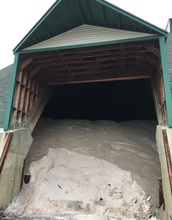
Salt “cocktails” are harming the water supply, 50-year study finds.
January 10, 2018 in Pantheism News
Our water supplies are suffering from a severe salt “cocktail” hangover.
During winter months, it’s easy to reach for the rock salt to melt the ice and snow on walkways and driveways for safety sake. Across North America, streams and rivers are becoming saltier, thanks to road deicers, fertilizers and other salty compounds that humans indirectly release into waterways. At the same time, freshwater supplies are becoming more alkaline or basic, the “opposite” of acidic. This is due to a combination of types of salts, researchers have dubbed “cocktails.”
This means big problems for drinking water supplies, urban infrastructure and natural ecosystems. The well-documented water crisis in Flint, Michigan, for example, occurred when the city switched its primary water source to the Flint River in 2014; the river’s high salt load combined with chemical treatments made the water corrosive and caused lead to leach from water pipes.
The National Science Foundation (NSF) funded the first research to assess long-term changes in freshwater salinity and pH — a measure of how acidic or alkaline something is — at the continental scale.
“Such water quality issues as sewage, wastewater and nutrient loading are being addressed,” said Tom Torgersen, director of NSF’s Water Sustainability and Climate program, which funded the research. “But management of water quality impacts remains a challenge because of our increasing population, the size of our built infrastructure and other factors.”
A half-century of data
The analysis draws from 50 years worth of data recorded at 232 monitoring sites across the country and shows significant increases in both salinization and alkalization. The results also suggest a close link between the two properties, with different salt compounds combining to do more damage than any one salt could do on its own.
“This research demonstrates the value of long-term data in identifying potential threats to valuable freshwater resources,” said John Schade, an NSF Long-Term Ecological Research program director. “Without such long-term efforts, widespread and significant degradation of water quality by human activities would remain unknown. Now we can begin to unravel the causes and develop strategies to mitigate potential effects on the environment and public health.”
The analysis, which is published in this week’s issue of the journal Proceedings of the National Academy of Sciences, has implications for freshwater management and salt regulation strategies in the United States, Canada and beyond. Researchers at the University of Maryland (UMD), the Cary Institute of Ecosystem Studies, the University of Connecticut (UConn), the University of Virginia and Chatham University co-authored the study.
“We created the term ‘Freshwater Salinization Syndrome’ because we realized that it’s a suite of effects on water quality,” said Sujay Kaushal, a biogeochemist at UMD and lead author of the study. “Many people assume that when you apply salt to roads and other surfaces it just gets washed away and disappears. But salt accumulates in soils and groundwater and takes decades to get flushed out.”
Changes in rivers across the country
The researchers documented sharp chemical changes in many of the country’s major rivers, including the Mississippi, Hudson, Potomac, Neuse, Canadian and Chattahoochee rivers. Many of these rivers supply drinking water for nearby cities and towns, including some of the most densely populated urban centers along the Eastern Seaboard. Kaushal said most freshwater salinization research has focused on sodium chloride, better known as table salt, which is also the dominant chemical in road deicers.
Salt has a much broader definition, encompassing any combination of positively and negatively charged ions that dissociate in water. Some of the most common positive ions found in salts — including sodium, calcium, magnesium and potassium — can have damaging effects on freshwater at higher concentrations.
“These ‘cocktails’ of salts can be more toxic than just one salt, as some ions can displace and release other ions from soils and rocks, compounding the problem,” said Kaushal. “Ecotoxicologists are just beginning to understand this.”
The study is the first to simultaneously account for multiple salt ions in freshwater across the United States and southern Canada. The results suggest that salt ions, damaging in their own right, are driving up the alkalinity of freshwater as well.
Significant increase in salinity
Over the 50-year study, the researchers concluded 37 percent of the drainage area in the contiguous United States experienced a significant increase in salinity. Alkalization, which is influenced by a number of different factors in addition to salinity, increased by 90 percent.
“Our study is the first to document a link between increased salinization and alkalization at the continental scale,” said scientist and study co-author Gene Likens of the Cary Institute of Ecosystem Studies and UConn. “Until now, we didn’t fully appreciate the role that different salts play in altering the pH of streams and rivers of our country. Salt content and pH are fundamental aspects of water chemistry, so these are major changes to the properties of freshwater.”
The causes for increased salt in waterways vary from region to region, Kaushal said. In the snowy Mid-Atlantic and New England, road salt applied to maintain roadways in winter is a primary culprit. In the heavily agricultural Midwest, fertilizers, particularly those with high potassium content, also make major contributions. In other regions, mining waste and weathering of concrete, rocks and soils releases salts into adjacent waterways.
“We found that the pH of some rivers started increasing in the 1950s and ’60s — decades before the implementation of acid rain regulations,” said Michael Pace, an environmental scientist at the University of Virginia and a co-author of the study. “We also observed increased salt concentrations in the Southeast, where they don’t apply road salts. These surprising trends presented a puzzle that our team worked to solve.”
In the drought stricken desert Southwest, where salt concentrations are historically high, Kaushal and his colleagues documented an overall decrease in salinity over time. The researchers attribute the decrease to a variety of factors, including changes in land and water use, coupled with an effort on the part of Western state and local governments to reduce salt use and improve water resource management strategies. For example, in 1973, the seven Western states included in the Colorado River Basin created the Colorado River Basin Salinity Control Forum to support salinity control efforts.
New salt pollution management strategies needed
Kaushal said many strategies for managing salt pollution already exist. Evidence suggests that brines are more efficient than granulated salt for deicing roads, yielding the same effect with less overall salt input. Pre- salting before a major snow event can also improve results.
“Not all salts are created equal in terms of their ability to melt ice at certain temperatures,” Kaushal added. “Choosing the right salt compounds for the right conditions can help melt snow and ice more efficiently with less salt input, which would go a long way toward solving the problem.”
Kaushal also said many Mid-Atlantic and Northeastern cities and states use outdated and inefficient salt-spreading equipment which are overdue for an upgrade. Fertilizer application in agricultural settings needs an upgrade as well. Applying correct fertilizer amounts at the right time in the season help reduce the overall output of salts into nearby streams and rivers. Careful urban development strategies, primarily building farther from waterways and designing better storm water drainage systems, can help reduce the amount of salt washed away from weathered concrete, the scientists say. There’s also a need to replace aging water pipes throughout the country, those affected by corrosion and scaling, or the buildup of mineral deposits and microbial films. Such pipes are particularly vulnerable to saltier, more alkaline water, increasing the release of toxic metals and other contaminants.
“The trends we are seeing show that we need to consider the issue of salt pollution and take it seriously,” Kaushal said. “These factors are something we need to address to provide safe water now and for future generations.”
—
The National Science Foundation (NSF) is an independent federal agency that supports fundamental research and education across all fields of science and engineering. In fiscal year (FY) 2017, its budget is $7.5 billion. NSF funds reach all 50 states through grants to nearly 2,000 colleges, universities and other institutions. Each year, NSF receives more than 48,000 competitive proposals for funding and makes about 12,000 new funding awards.

